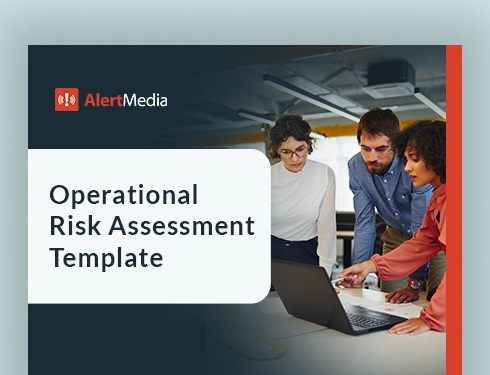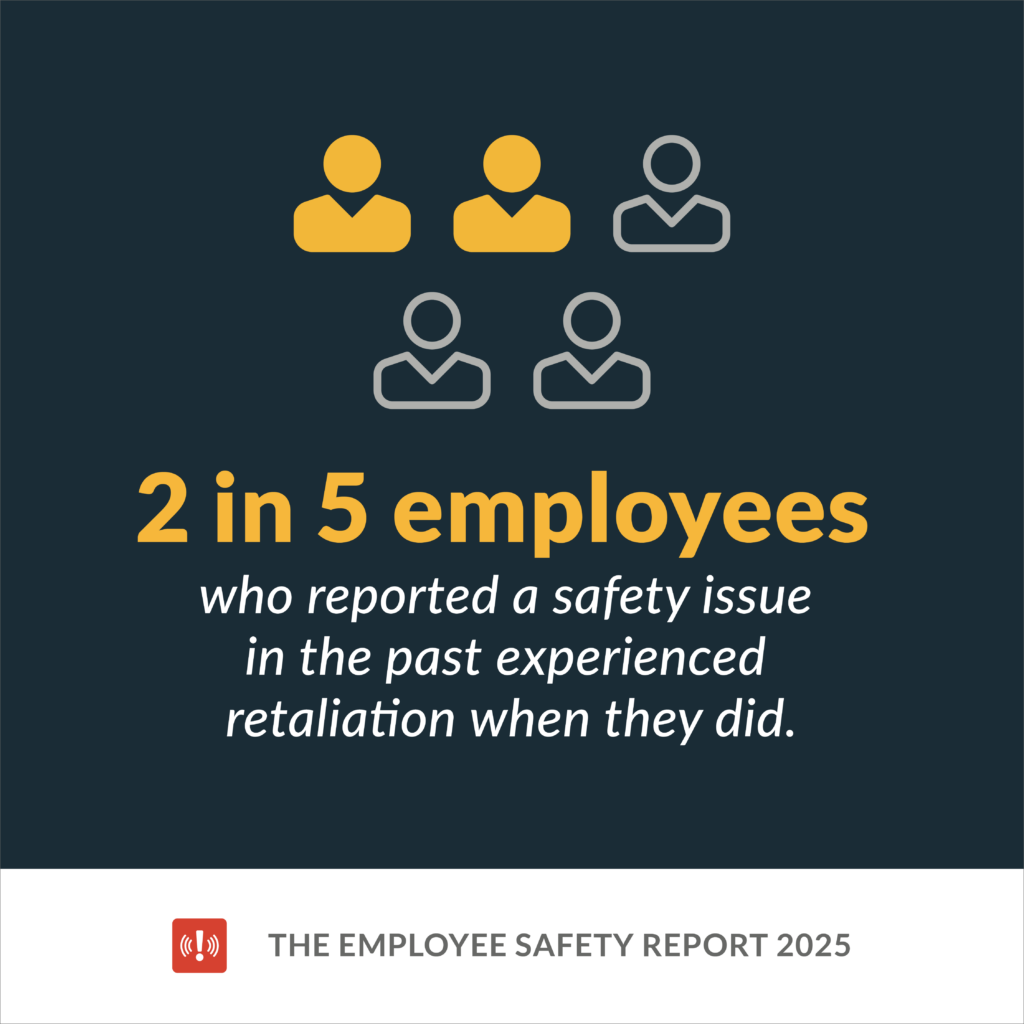
Insider Risk Management: Building a Culture of Security and Trust

Insider risks have emerged as one of the most challenging and potentially damaging threats in today’s rapidly evolving business landscape. Insider risk management is no longer a peripheral concern but a critical component of an organization’s overall risk management strategy.
This blog aims to provide organizational leaders with a comprehensive understanding of insider risk management, its importance, and actionable strategies to mitigate these risks effectively.
Download Our Operational Risk Assessment Template
Understanding Insider Risk
What is insider risk?
Insider risk refers to the potential for harm to an organization caused by the actions of individuals within the organization. These individuals could be employees, contractors, or business partners who have legitimate access to the organization’s systems, data, and facilities.
Insider risks can manifest in various forms, including:
- Data theft: Unauthorized access and exfiltration of sensitive information
- Sabotage: Deliberate actions to disrupt operations or damage assets
- Espionage: Sharing confidential information with external parties for personal gain or competitive advantage
- Negligence: Unintentional actions that lead to security breaches or data loss
Insider risks vs. insider threats: What’s the difference?
Insider risks refer to the potential for harm caused by insiders, whether intentional or unintentional. These risks encompass a broad range of scenarios, including negligence, accidental data exposure, or malicious intent.
Insider threats, on the other hand, are specific instances where an insider’s actions (intentional or unintentional) harm the organization. For example, a disgruntled employee stealing intellectual property or a careless contractor accidentally leaking sensitive data.
Types of insiders
Insider risks can be categorized based on the intent and nature of the insider’s actions:
1. Malicious insiders: Individuals who intentionally cause harm to the organization for personal gain, revenge, or other motives.
2. Negligent insiders: Employees who inadvertently cause security breaches due to carelessness or lack of awareness.
3. Compromised insiders: Individuals whose credentials or access rights have been hijacked by external attackers.
Insider risks in modern workplaces
The shift to remote work, cloud-based systems, and hybrid environments has introduced new insider risks. These include:
| Remote work risks Employees working from home may use unsecured networks or personal devices, increasing the risk of data breaches. | Cloud misconfigurations Insiders with excessive permissions may accidentally expose sensitive data stored in cloud environments. |
| Shadow IT Employees using unauthorized tools or applications to bypass IT policies, creating vulnerabilities. | Collaboration tool risks Over-sharing sensitive information on platforms like Slack or Microsoft Teams, leading to accidental data leaks. |
Understanding these modern risks is essential for tailoring your insider risk management program to today’s workplace realities.
Common factors contributing to insider risks
Insider risks often stem from a combination of organizational, psychological, and environmental factors. Common contributors include:
- Lack of training: Employees who are unaware of security best practices are more likely to make mistakes, such as falling for phishing scams or mishandling sensitive data.
- Poor access controls: Overly permissive access rights increase the likelihood of data misuse or accidental exposure.
- Low morale or disengagement: Disgruntled employees may intentionally sabotage systems or steal data as an act of revenge.
- Pressure or incentives: Financial stress or external incentives (e.g., bribes) can motivate insiders to act maliciously.
- Technological complexity: The growing complexity of IT environments makes it harder to monitor and secure all access points, increasing the risk of insider incidents.
By addressing these factors, organizations can reduce the likelihood of insider risks and create a more secure workplace.
The Importance of an Insider Risk Management Program
In an era of rising insider incidents, organizations must prioritize the development and implementation of a robust insider risk management program. This dedicated effort is essential not only for mitigating the risks posed by malicious insiders but also for addressing unintentional risky behavior that can lead to data breaches or operational disruptions.
Effective insider threat management goes beyond reactive measures; it involves proactive strategies, including enforcing comprehensive insider risk management policies and ensuring adherence to regulatory compliance standards. By establishing a structured program, organizations can better safeguard their critical assets, maintain operational continuity, and foster a culture of security awareness that minimizes vulnerabilities from within.
The evolving threat landscape
The increasing digitization of business processes and the proliferation of remote work have expanded the attack surface for insider threats. According to recent studies, the global average cost of a data breach increased by 10% between 2023 and 2024 to $4.88 million. The consequences of insider risks extend beyond financial losses and can include reputational damage, regulatory penalties, and operational disruptions.
Case study: Tesla data leak
In 2023, two former Tesla employees leaked sensitive data to a foreign media outlet. The breach exposed personal information, including names, addresses, phone numbers, employment records, and social security numbers of over 75,000 current and former employees.
Additionally, customer bank details and proprietary production secrets were compromised. This incident underscores the expanding risk landscape, where insider actions can lead to significant data breaches, affecting both employee privacy and corporate intellectual property.
Regulatory and compliance requirements
Organizations are subject to regulatory requirements that mandate the protection of sensitive data and the implementation of robust security measures. Insider risk management is a critical component of compliance with regulations such as the General Data Protection Regulation (GDPR), the Health Insurance Portability and Accountability Act (HIPAA), and the Sarbanes-Oxley Act (SOX). Failure to comply with these regulations can result in severe penalties and legal consequences.
Case study: Capital One data breach
In 2019, Capital One experienced a data breach affecting over 100 million customers. A former employee of a third-party cloud service provider exploited a misconfigured firewall to access sensitive data, including accounts and credit card applications.
This breach highlighted the importance of stringent regulatory compliance and the need for robust security measures when handling sensitive customer information. The incident led to regulatory scrutiny and emphasized the necessity for organizations to ensure compliance with data protection laws.
Safeguarding business continuity
Insider risks can disrupt business operations, leading to downtime, loss of productivity, and damage to critical infrastructure. Effective insider risk management ensures that organizations can maintain business continuity even in the face of internal threats. By identifying and mitigating insider risks, organizations can protect their assets, maintain customer trust, and ensure the smooth functioning of their operations.
Case study: Twitter (now X) spear-phishing attack
In 2020, Twitter faced a significant security incident. Hackers used a phone-based spear-phishing campaign targeting Twitter employees. This attack compromised multiple high-profile accounts, including those of Bill Gates and Barack Obama, to promote a Bitcoin scam.
While the financial impact was relatively minor, the breach highlighted vulnerabilities in internal controls and the potential for insider threats to disrupt business continuity. The incident emphasized the need for comprehensive employee training and robust security protocols to mitigate similar risks.
Key Components of Insider Risk Management
Risk assessment and identification
The first step in insider risk management is to conduct a comprehensive risk assessment to identify potential insider threats. This involves:
- Identifying critical assets: Determine which assets are most valuable and vulnerable to insider threats. This includes critical data such as intellectual property, trade secrets, and other sensitive information.
- Assessing access controls: Evaluate the effectiveness of current access controls and identify any gaps. Ensure that permissions and privileged access are configured appropriately to minimize potential risks.
- Analyzing behavioral patterns: Monitor employee behavior for signs of potential insider threats, such as unusual access patterns or attempts to bypass security controls.
Policy development and implementation
Developing and implementing clear policies and procedures is essential for mitigating insider risks because they provide a structured framework for managing and reducing the potential for harm. With standardized policies, you establish clear organization-wide expectations, enforce consistent security practices, support regulatory compliance, and promote accountability. Key policies include:
- Acceptable use policy (AUP): Defines acceptable use of organizational resources and outlines consequences for policy violations.
- Data classification and handling policy: Establishes guidelines for classifying and handling sensitive data.
- Incident response policy: Provides a framework for responding to insider threats and security incidents.
- Develop adaptive compliance policies: Create compliance policies that not only meet regulatory requirements but also align insider incentives with organizational security objectives. For example, reward employees for adhering to security protocols or reporting potential risks. Adaptive policies foster a culture of compliance by making security a shared responsibility rather than a top-down mandate.
- Dynamic policy enforcement: Tailor insider risk management policies to reflect the specific roles, access levels, and users’ risk histories. For example, employees in high-risk positions (e.g., IT administrators or executives) may require stricter access controls and more frequent monitoring. Similarly, users with a history of risky behavior, such as repeated policy violations, should be subject to enhanced scrutiny. By customizing policies based on these factors, organizations can more effectively mitigate insider risks while minimizing disruption to legitimate workflows.
Employee training and awareness
Human error and negligence are significant contributors to insider risks. Regular training and awareness programs can help employees understand the importance of security and their role in protecting organizational assets. Training should cover:
- Security best practices: Educate employees on data protection best practices, password management, and phishing awareness.
- Recognizing insider threats: Train employees to recognize signs of potential insider threats and report suspicious activities. (Download our Situational Awareness Training Exercises.)
- Compliance requirements: Ensure employees are aware of regulatory requirements and the consequences of non-compliance.
Monitoring and detection
Continuous monitoring and threat detection are critical for identifying and responding to insider threats in real time. A vigilant team can track behavioral patterns, proactively detect suspicious activities, mitigate risks before they escalate, minimize potential damage, and adapt to evolving threats. Practical monitoring strategies include:
- User activity monitoring: Track user activity to detect unusual or unauthorized actions.
- Data loss prevention (DLP): Implement DLP solutions to monitor and control the movement of sensitive data.
- Behavioral analytics: Use behavioral analytics to identify anomalies in user behavior that may indicate insider threats.
Incident response and mitigation
Insider threats can be particularly challenging to address due to the trusted nature of the individuals involved. Having a robust incident response plan in place is essential for managing insider threats because it provides a structured and efficient framework for identifying, containing, and mitigating risks caused by malicious or negligent insiders. The incident response plan should include:
- Incident identification: Establish procedures for identifying and reporting insider threats.
- Containment and eradication: Implement measures to contain the threat and prevent further damage.
- Investigation and analysis: Conduct a thorough investigation to determine the root cause of the incident and assess the business impact.
- Recovery and remediation: Restore affected systems and implement measures to prevent future incidents.
Continuous improvement
Insider risk management is an ongoing process that requires continuous improvement. Organizations should regularly review and update their risk management strategies to address emerging threats and changing business environments. Key activities include:
- Regular audits: Conduct regular audits to assess the effectiveness of insider risk management measures.
- Feedback and improvement: Gather feedback from employees and stakeholders to identify areas for improvement.
- Staying informed: Stay informed about the latest trends and developments in insider risk management and incorporate best practices into the organization’s strategy.
How to Conduct a Business Impact Analysis
This video will help you facilitate an effective business impact analysis at your organization.
6 Best Practices for Insider Risk Mitigation
1. Foster a culture of security through specific strategies
Creating a culture of security is essential for effective insider risk management. This involves more than just policies—it requires actionable strategies to engage employees and make security a shared responsibility. Here’s how to do it:
- Ensure leadership commitment: Leaders should model secure behaviors, such as following password management protocols and reporting suspicious activities. When employees see leadership prioritizing security, they are more likely to follow suit.
- Conduct regular security training: Conduct frequent, engaging training sessions that cover real-world scenarios, such as phishing attacks or accidental data leaks. Use interactive methods like simulations to reinforce learning.
- Maintain open communication channels: Encourage employees to report suspicious behavior without fear of retaliation. Implement anonymous reporting tools to make it easier for employees to speak up.
- Present recognition and rewards: Recognize and reward employees who demonstrate strong security practices, such as identifying potential risks or adhering to password policies. This reinforces positive behavior and motivates others to follow.
The 2025 Employee Safety Report found that a third (32%) of U.S. and U.K. employees aren’t comfortable reporting safety and security issues. Two in five employees (39%) who reported a safety issue in the past experienced retaliation when they did, which may contribute to the lack of comfort in reporting.

2. Implement least privilege access
The principle of least privilege (PoLP) is a cornerstone of access control and insider risk management. It ensures that users have the minimum level of access necessary to perform their job functions. Here’s how to apply it:
- Set up configurable and role-based access controls: Effective insider risk management requires configurable access controls that adapt to the evolving needs of the organization. Role-based access control (RBAC) ensures that permissions are assigned based on job functions, while configurable policies allow for fine-tuning access rights as roles change or new risks emerge. For example, access controls can be configured to automatically revoke permissions when an employee changes departments or to grant temporary access for specific projects. This flexibility ensures that access rights remain aligned with organizational needs while minimizing the risk of insider incidents.
- Schedule regular access reviews: Conduct periodic audits to ensure employees’ access rights align with their current roles. Remove unnecessary permissions, especially when employees change roles or leave the organization.
- Grant temporary access: For short-term projects, grant temporary access that automatically expires after a set period. This reduces the risk of lingering permissions that could be exploited.
3. Detailed password management practices
Weak or compromised passwords are a common entry point for insider threats. Implementing robust password management practices is critical for reducing this risk. Here’s how to strengthen your password policies:
- Enforce strong password requirements: Passwords must be at least 12 characters long and contain a mix of uppercase, lowercase, numbers, and special characters.
- Implement multi-factor authentication (MFA): MFA adds an extra layer of security by requiring users to verify their identity through a second factor, such as a mobile app or biometric scan.
- Use password managers: Encourage employees to use password managers to generate and store complex passwords securely. This reduces the risk of password reuse or weak passwords.
- Regular password updates: Mandate periodic password changes but avoid overly frequent changes that may lead to weaker passwords. Balance security with usability.
- Monitor for compromised passwords: Use tools to check if employee passwords have been exposed in data breaches and require immediate updates if a compromise is detected.
4. Incorporate technology solutions
Technology plays a crucial role in insider risk management. Organizations should leverage advanced security solutions to enhance their ability to detect and respond to insider threats. Key technologies include:
- User and entity behavior analytics (UEBA): UEBA solutions use machine learning and behavioral analytics to detect anomalies in user behavior.
- Data loss prevention (DLP): DLP solutions monitor and control the movement of sensitive data to prevent unauthorized access and exfiltration.
- Endpoint detection and response (EDR): EDR solutions provide real-time monitoring and response capabilities for endpoints, helping to detect and mitigate insider threats.
5. Conduct regular risk assessments
Regular insider threat assessments are essential for identifying and addressing potential insider threats. These assessments provide a proactive approach to understanding vulnerabilities, evaluating the effectiveness of existing controls, and uncovering gaps that could be exploited by malicious or negligent insiders. Organizations should conduct these assessments periodically—such as quarterly or biannually—to ensure their security measures remain aligned with evolving threats.
You should also perform assessments whenever there are significant changes to the business environment, such as mergers, acquisitions, or the introduction of new technologies. For example, a merger might bring new employees with different access levels, while adopting cloud-based tools could introduce new risks like misconfigured permissions. By staying ahead of these changes, organizations can adapt their insider risk mitigation strategies, implement targeted safeguards, and reduce the likelihood of insider incidents. Regular assessments also demonstrate a commitment to security, helping to build trust with stakeholders and ensuring compliance with regulatory requirements.
6. Develop a comprehensive incident response plan
A well-defined incident response plan is critical for effectively managing insider threats, as it provides a structured and efficient framework for addressing risks caused by malicious or negligent insiders. The plan should outline the steps to be taken in the event of an insider threat, including incident identification (detecting unusual activities through monitoring tools), containment (isolating affected systems and revoking access), investigation (gathering evidence and determining the root cause), and recovery (restoring systems and implementing measures to prevent recurrence).
Testing the plan regularly—through tabletop exercises or simulated scenarios—ensures that all stakeholders understand their roles and can respond swiftly during a real incident. Additionally, the plan should be updated periodically to reflect changes in the threat landscape, organizational structure, or technology environment. By maintaining a robust and up-to-date incident response plan, organizations can minimize the impact of insider threats, protect critical assets, and ensure business continuity.
Advanced Strategies for Insider Risk Management
- Integrate security solutions Integrating various security solutions can provide a more comprehensive approach to insider risk management. For example, combining user and entity behavior analytics (UEBA) with data loss prevention (DLP) and endpoint detection and response (EDR) solutions creates a unified defense mechanism. UEBA identifies anomalous user behavior, DLP monitors and controls the movement of sensitive data, and EDR provides real-time visibility into endpoint activities. Together, these tools offer a holistic view of user actions and data flows, enabling security teams to detect and respond to insider threats more effectively. Integrating with security information and event management (SIEM) systems provides a unified view of threats across the organization. SIEM platforms aggregate and analyze data from multiple sources, enabling security teams to correlate insider activities with external threats and effectively identify potential risks. Integration also reduces silos between tools, streamlining workflows and improving overall security posture.
- Adopt a zero-trust framework A zero-trust architecture assumes that no user or device is inherently trustworthy, requiring continuous verification of identities and access rights. This approach minimizes the risk of insider threats by enforcing strict access controls and reducing the attack surface. Key components of zero-trust include micro-segmentation, which limits lateral movement within the network, and least privilege access, which ensures users only have access to the resources necessary for their roles. Additionally, multi-factor authentication (MFA) adds an extra layer of security by requiring users to verify their identity through multiple methods.
- Use connectors for enhanced visibility Connectors play a vital role in integrating different security tools and platforms, providing enhanced visibility into user activities and data access. For example, connectors can link security information and event management (SIEM) systems with cloud access security brokers (CASB) or identity and access management (IAM) solutions. This integration enables seamless data sharing and correlation, allowing security teams to detect suspicious patterns that might otherwise go unnoticed.
- Implement real-time alerts and risk indicator systems Real-time alerts and risk indicator systems are critical for identifying and responding to insider threats as they occur. To implement these systems effectively, organizations should first define clear risk indicators, such as unusual login attempts, access to sensitive data outside of normal working hours, or attempts to bypass security controls. Once these indicators are established, automated systems can be configured to generate real-time alerts when user activity matches predefined policy conditions. For example, an alert might be triggered if an employee downloads a large volume of sensitive data or accesses systems they’ve never used before. These alerts enable security teams to take immediate action, minimizing the potential damage caused by insider incidents. Be sure to continue including human oversight in your processes to avoid false positives and ensure context-aware decision-making.
- Use AI and machine learning for risk detection AI and machine learning (ML) technologies offer a transformative approach to detecting insider risks by analyzing vast amounts of data for patterns and anomalies. Behavioral analytics powered by AI can identify deviations from normal user behavior, such as an employee suddenly accessing files they’ve never opened before or logging in from an unusual location. Machine learning models can also provide predictive insights by analyzing historical data to identify trends, such as employees who exhibit risky behavior over time. These models continuously improve as they process more data, enabling them to detect increasingly subtle anomalies. However, AI and ML are not infallible. Human vetting is critical to validating AI-generated insights, interpreting context, and making informed decisions. For instance, an AI might flag an employee working late as a risk, but a human can determine if this is due to a legitimate project deadline. By combining the strengths of AI with human expertise, organizations can proactively identify and address insider risks while minimizing false alarms.
- Conduct regular penetration testing Regular penetration testing is a proactive measure to identify and address vulnerabilities that could be exploited by insiders. Simulating real-world attacks helps organizations uncover weaknesses in their security posture, such as misconfigured systems, overly permissive access controls, or unpatched software. Penetration testing provides actionable insights into potential entry points for insider threats, enabling organizations to remediate these issues before they can be exploited. Additionally, regular testing helps ensure that security measures remain effective as the threat landscape evolves, making it a critical insider risk management solution.
- Protect intellectual property and trade secrets Intellectual property (IP) and trade secrets are often prime targets for insider threats, whether through malicious intent or accidental exposure. To safeguard these critical assets, organizations should implement a multi-layered defense strategy. This includes encrypting sensitive data, enforcing strict access controls, and monitoring for unauthorized access or exfiltration. Additionally, organizations can use digital rights management (DRM) tools to control how sensitive files are accessed, shared, and used.
- Enhance information security Enhancing information security is a cornerstone of effective insider risk management. This involves implementing robust security policies that govern data handling, access, and sharing. Regular security training ensures that employees understand their role in protecting sensitive information and can recognize potential threats. Advanced cybersecurity technologies, such as encryption, intrusion detection systems (IDS), and data loss prevention (DLP) tools, further strengthen the organization’s defenses. When you foster a culture of security awareness and leverage cutting-edge technologies, you can reduce the likelihood of insider incidents and maintain the integrity of your information systems.
Building a Resilient Future: The Path Forward for Insider Risk Management
By incorporating these best practices and advanced strategies—such as fostering a culture of security, implementing the principle of least privilege, and enforcing detailed password management practices—organizations can significantly reduce their exposure to insider risks. These measures not only protect critical data and systems but also empower employees to be active participants in the organization’s security efforts.
With a proactive and comprehensive approach to insider risk management, organizations can build a resilient future, safeguarding their assets, reputation, and long-term success in an increasingly complex threat landscape.





